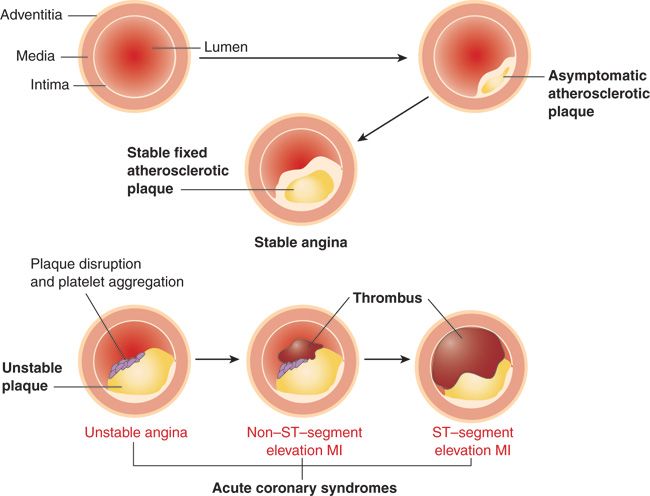W.B.C.S. Main 2018 Question Answer – Medical Science – Unstable Angina.
WBCS মেইনস ২০১৮ প্রশ্ন উত্তর – চিকিত্সা বিজ্ঞান – অস্থির এনজিনা।
1)Write a short note on Unstable Angina.
Unstable angina is a pattern of angina that occurs randomly or unpredictably and is unrelated to any obvious trigger such as physical exertion or emotional stress. Unstable angina is a form of acute coronary syndrome (ACS), and like all ACS, unstable angina should be considered a medical emergency.Continue Reading W.B.C.S. Main 2018 Question Answer – Medical Science – Unstable Angina.
Overview
Angina is considered to be “unstable” when it no longer follows the predictable patterns typical of “stable angina.” Unstable angina is categorized as “unstable” in two scenarios.
First, in contrast to stable angina, symptoms occur in a more random and unpredictable fashion. While in stable angina, symptoms typically are brought on by exertion, fatigue, anger, or some other form of stress, in unstable angina symptoms can (and often do) occur without any apparent trigger. In fact, unstable angina often occurs at rest, and can even wake people from a restful sleep. Furthermore, in unstable angina, the symptoms often persist for more than just a few minutes, and nitroglycerin often fails to relieve the pain. So: unstable angina is “unstable” because symptoms may occur more frequently than usual, without any discernible trigger, and may persist for a long time.
Second, and more importantly, unstable angina is “unstable” because, as with all forms of ACS, it is most often caused by the actual rupture of a plaque in a coronary artery. In unstable angina, the ruptured plaque, and the blood clot that is almost always associated with the rupture, producing partial blockage of the artery. The partial blockage may take a “stuttering” pattern (as the blood clot grows and shrinks), producing angina that comes and goes in an unpredictable fashion. If the clot should cause complete obstruction of the artery (which happens commonly), the heart muscle supplied by that affected artery is in grave danger of sustaining irreversible damage. In other words, the imminent risk of a complete myocardial infarction is very high in unstable angina. Obviously, such a condition is quite “unstable,” and for this reason is a medical emergency.
Symptoms
Anybody with a history of coronary artery disease should suspect unstable angina if their angina begins to occur at lower levels of physical exertion than normal if it occurs at rest if it persists longer than usual if it is more difficult to relieve with nitroglycerin, or especially if it wakes them up at night.
People without any history of coronary artery disease can also develop unstable angina. Unfortunately, these people seem to be at higher risk of a heart attack because, unfortunately, they often don’t recognize the symptoms as being angina.
The classic symptoms of angina include chest pressure or pain, sometimes squeezing or “heavy” in character, often radiating to the jaw or left arm. Unfortunately, many patients with angina do not have classic symptoms. Their discomfort may be very mild and may be localized to the back, abdomen, shoulders, or either or both arms. Nausea, breathlessness, or merely a feeling of heartburn may be the only symptom. What this means, essentially, is that anyone middle-aged or older, especially anyone with one or more risk factors for coronary artery disease, should be alert to symptoms that might represent angina.
If you think there is any possibility you might have unstable angina, you need to go to your doctor, or to an emergency room, immediately.
Diagnosis
Symptoms are critically important in making the diagnosis of unstable angina, or indeed, any form of ACS. In particular, if you have one or more of the following three symptoms, your doctor should take that as a strong clue that one type or another of ACS is occurring:
- Angina at rest, especially if it lasts more than 20 minutes at a time
- New onset angina that markedly limits your ability to engage in physical activity
- An increase in prior stable angina, with episodes that are more frequent, longer lasting, or occur with less exertion than previously
Once your doctor suspects ACS, he should immediately get an ECG and blood tests for cardiac enzyme testing.
If the portion of the ECG known as “ST segments” are elevated (which indicates that the artery is completely blocked), and the cardiac enzymes are increased (which indicates cardiac cell damage), a “large” myocardial infarction (MI) is diagnosed (also called an “ST-segment elevation MI,” or STEMI).
If the ST segments are not elevated (indicating that the artery is not completely blocked), but the cardiac enzymes are increased (indicating that cell damage is present), a “smaller” MI is diagnosed (also called a “non-ST segment MI,” or NSTEMI).
If the ST segments are not elevated and the enzymes are normal (meaning the artery is not completely blocked and no cell damage is present), unstable angina is diagnosed.
Notably, unstable angina and NSTEMI are similar conditions. In each condition, a plaque rupture has occurred in a coronary artery, but the artery is not completely blocked so at least some blood flow remains. In both of these conditions, the symptoms of unstable angina are present. The only difference is that in an NSTEMI enough heart cell damage has occurred to produce an increase in cardiac enzymes. Because these two conditions are so similar, their treatment is identical.
Treatment
If you have either unstable angina or NSTEMI, you will be treated with one of two general approaches: a) treat aggressively with drugs to stabilize the condition, then evaluate non-invasively, or b) treat aggressively with drugs to stabilize the condition, and schedule early invasive intervention (generally, angioplasty and stenting).
Our own publications are available at our webstore (click here).
For Guidance of WBCS (Exe.) Etc. Preliminary , Main Exam and Interview, Study Mat, Mock Test, Guided by WBCS Gr A Officers , Online and Classroom, Call 9674493673, or mail us at – mailus@wbcsmadeeasy.in
Visit our you tube channel WBCSMadeEasy™ You tube Channel
Please subscribe here to get all future updates on this post/page/category/website



 +919674493673
+919674493673  mailus@wbcsmadeeasy.in
mailus@wbcsmadeeasy.in






































































































